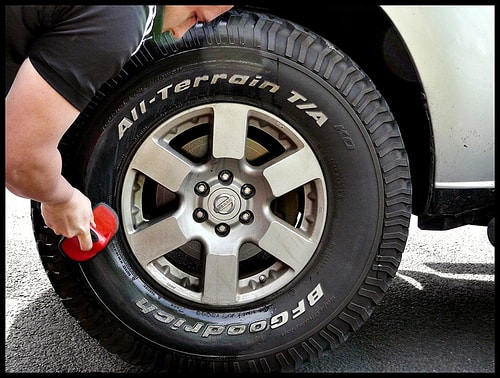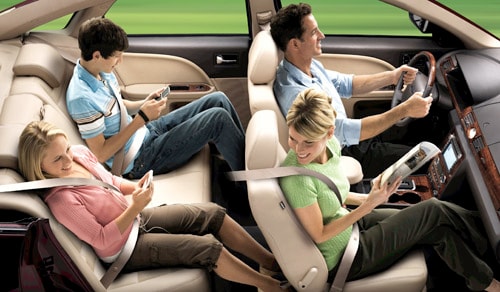8 mistakes new drivers often make
New drivers often fall prey to myths ranging from bad maintenance advice to inadequate safety advice. This article is for those new to the wheel. If you are an experienced driver, you should also take a look and share your thoughts with the new driver.
Mistake #1: Changing the oil too soon
For years, auto service centers have recommended oil changes every 3,000 miles, and that has earned the trust of many of us. Changing the oil too soon won’t damage your car, but it will cost you money and time.
Newer cars typically require an oil change every 7,500 miles. Some synthetic oils even claim 15,000 miles. This may seem like a long time. It's best to change your oil according to the instructions that came with your car.
Mistake #2: Using premium gasoline makes the car more powerful.
Octane number 87 is classified as regular gasoline, 89 is average gasoline, and above 92 is premium gasoline. Which type of gasoline to use depends on the compression ratio of the engine. Compression ratio below 8:1 should use regular gasoline, compression ratio above 8:1 should use average gasoline, engine compression ratio above 9:1 should use premium gasoline with octane number 92 or higher.
Vehicles with high compression ratios using regular gasoline will experience premature detonation, causing the engine to lose power. On the contrary, vehicles with low compression ratios using premium gasoline will not cause any harm, but will not increase performance, just wasting money.
Some people think that premium gasoline has a detergent additive to clean fuel injectors. This depends on the country, in the US, the EPA requires all gasoline to have a detergent additive, not just premium gasoline. So what kind of gasoline is suitable for your car? The best way is to consult the owner's manual that came with your car. Never assume that a higher octane car is better.
Mistake #3: Frequently using dashboard and tire polish.
Over time, the dashboard will accumulate dust and the tires will lose their shine, but using wax polish does more harm than good. Experts say that a shiny dashboard will be dazzling, and the chemicals in the wax will cause the dashboard to age quickly. The same goes for tires, the chemicals in the wax will remove the protective layer of rubber, causing the tire to crack quickly.
 |
Manufacturers often make dashboards out of matte material to avoid glare. Dashboards should be dusted with a damp cloth and tires should be cleaned with mild soap, a soft brush, and clean water.
Mistake #4: Return the transmission to N when stopping at a red light (for AT).
This myth stems from the idea that leaving the car in D (Drive) while braking wastes fuel and causes unnecessary wear and tear on the transmission. In reality, the wear and tear on the engine and fuel consumption are very small.
If you frequently shift from N to D, then step on the gas every time the green light comes on, it can wear out the gearbox and transmission system, even if it's just a little. After all, even if you leave the steering wheel in D, no one can measure the damage or not, it's just that some drivers have a habit of fiddling with the steering wheel. For these people (who like to return to N when encountering red lights), they should drive manual transmission cars.
Mistake #5: It's safe to talk on the phone with your hands free while driving.
Whether it's good or bad, we'll leave it to you to decide, here are the statistics. According to the National Highway Traffic Safety Administration, an estimated 1 in 12 people aged 18 to 24 use a mobile phone while driving. Traffic police say 1 in 4 traffic accidents are caused by distracted driving, and mobile phones play a significant role. People who cause accidents usually don't have their mobile phones in their hands, and they don't operate the vehicle with one hand. This proves that headphones don't help you avoid distraction.
Mistake #6: You don't need to wear a seat belt if you're in the back seat.
They rarely come out in support of this, but their actions speak louder than words. There are two dangers of not wearing a seat belt when sitting in the back seat: one is that they themselves can be seriously injured if the car rolls over. Two is that they become the bullet that shoots at other members of the car in the event of a collision.
Mistake #7: Not locking the door so that rescuers can easily get you out after an accident.
 |
Sounds reasonable, right? No. Leaving your doors unlocked can cause you to be ejected from your vehicle in a crash, killing about 10,000 people each year in the US. Some newer cars have doors that can unlock automatically when the airbags are deployed, and even if they are locked, emergency personnel can still break them down to get to the passengers. Locking your doors is a good way to protect your passengers.
Mistake #8: Holding the steering wheel too low
Read and follow the advice of NHTSA: The steering wheel should not be aimed at the head but at the sternum with a distance of about 16 cm. But be careful, if the steering wheel is too low and the driver has the habit of driving with one hand, he or she will tend to rest his or her hand on the top of the steering wheel (12 o'clock position), so in the event of a collision, the airbag will deploy from below and can break the arm.
Remember to keep both hands on the steering wheel, one at about 3 o'clock and one at 9 o'clock, and sit upright 16 cm from the steering wheel. Sitting like this may not be comfortable at first, but you will get used to it over time, and it could save your life in a car accident.
According to VnMedia






